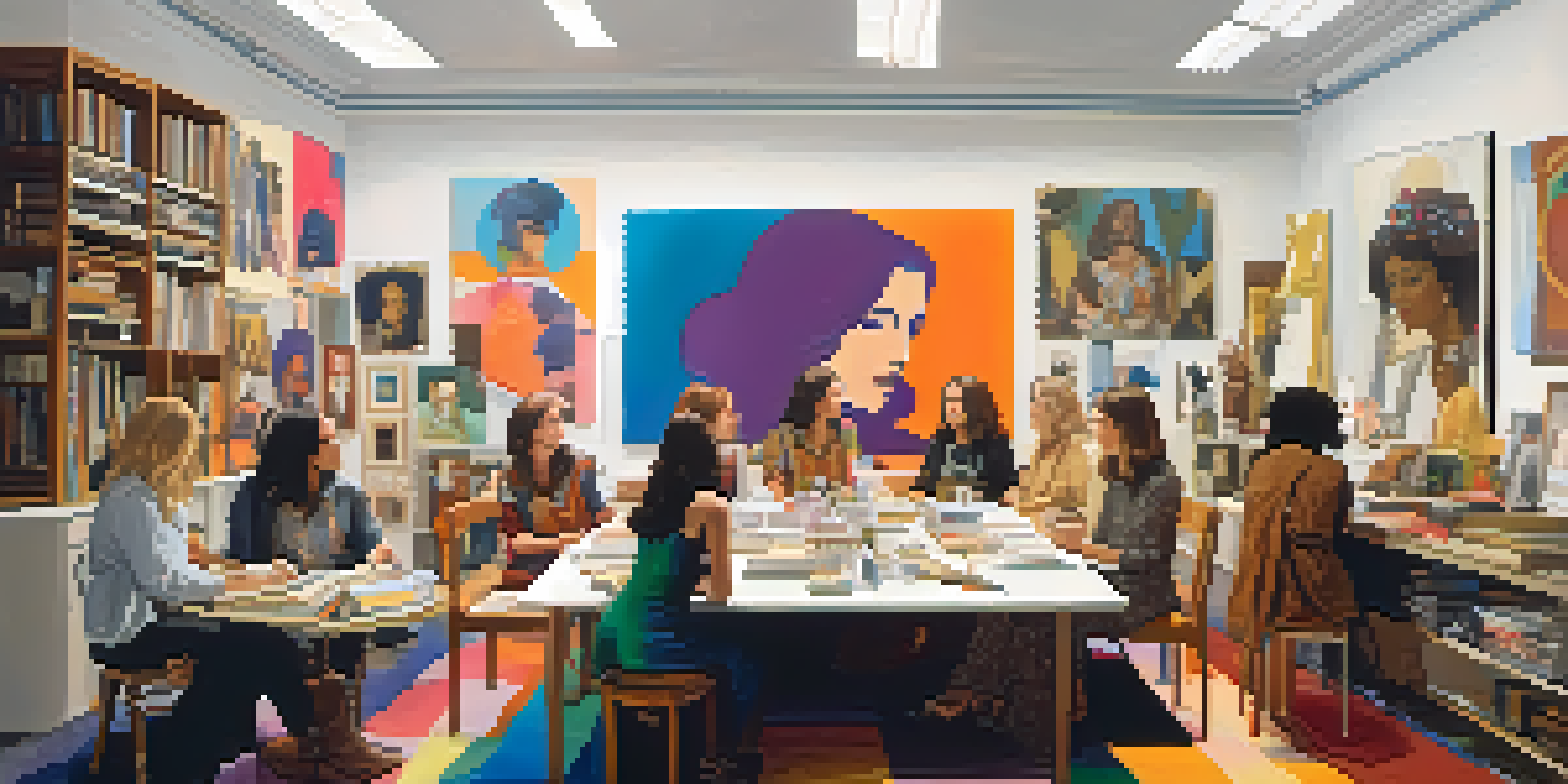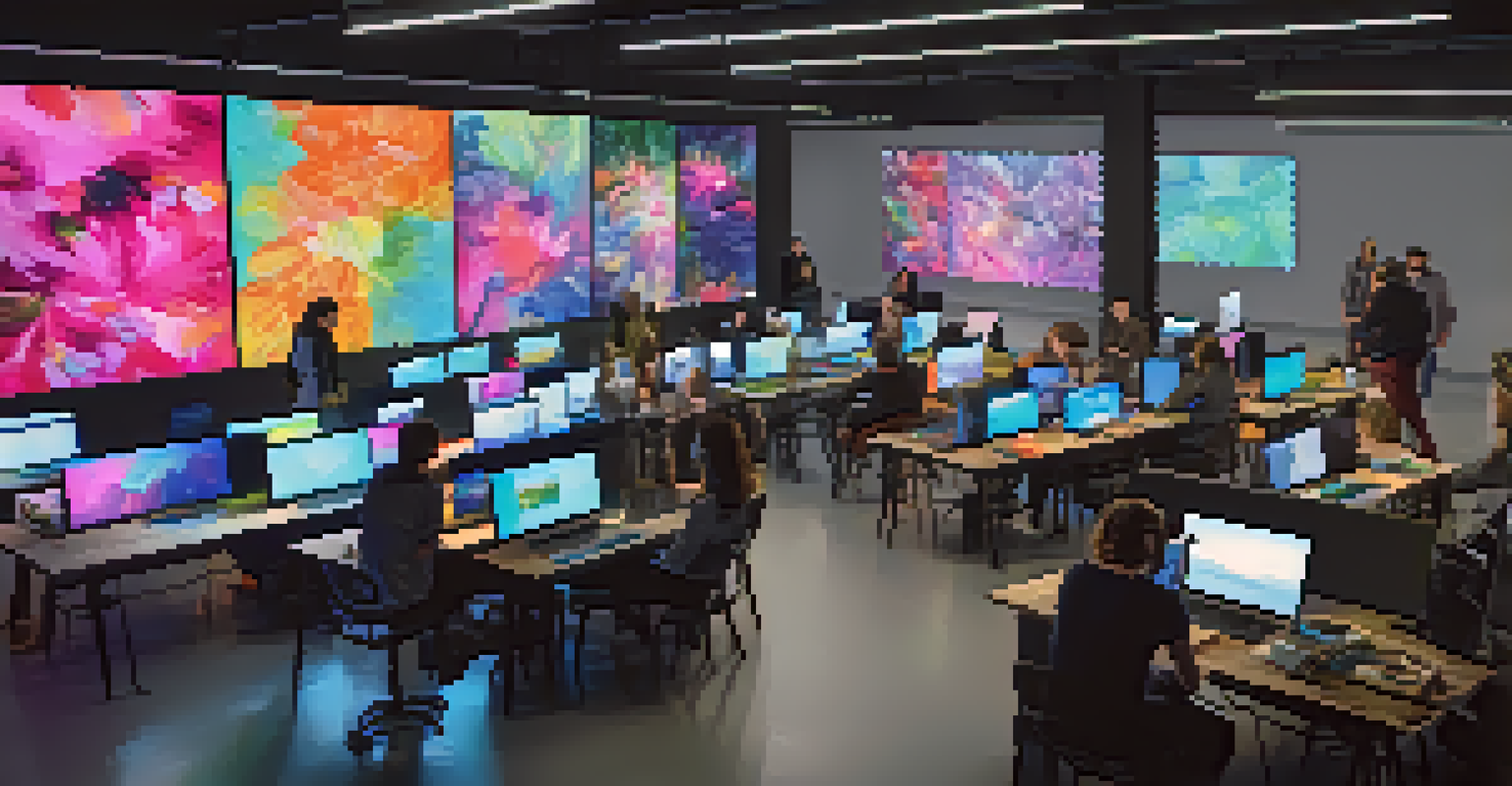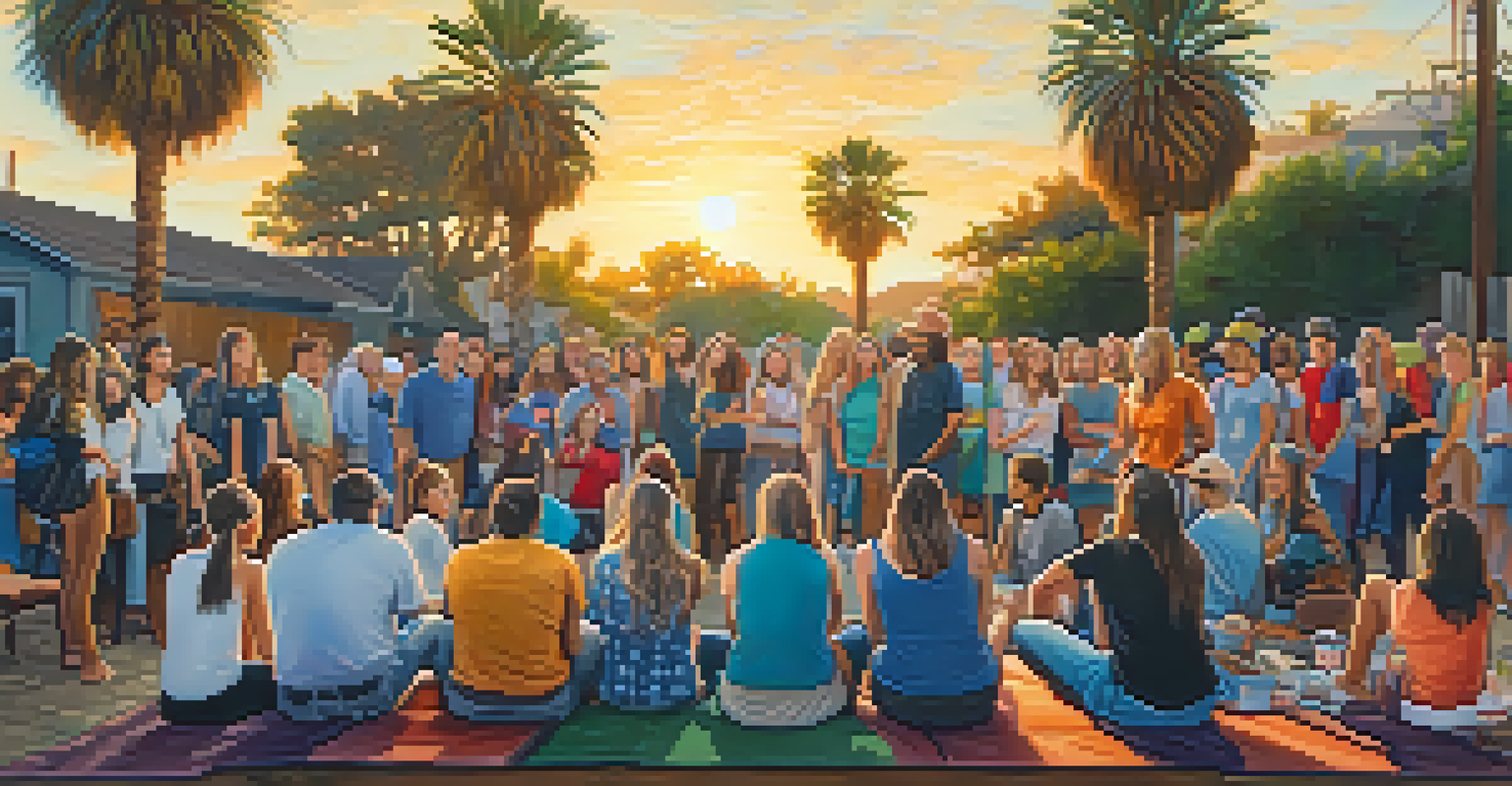The Evolution of Art Collectives in California's History

The Roots of Art Collectives in California
Art collectives in California have a rich history that dates back to the early 20th century. They emerged as a response to the growing need for community among artists who were often struggling to find their footing in the competitive art world. This period saw the establishment of groups like the California Watercolor Society, which provided artists with networking opportunities and a platform to showcase their work.
Art is not a mirror held up to reality, but a hammer with which to shape it.
These early collectives were not just about creating art; they were about fostering a sense of belonging. Artists would gather to share ideas, critique each other's work, and collaborate on projects. This spirit of camaraderie laid the groundwork for many future art collectives, shaping the way artists interacted and worked together.
As the decades progressed, these collectives evolved, reflecting the changing dynamics of society and the art world. The 1960s and '70s, in particular, saw a surge in collectives that were more politically charged, addressing issues such as civil rights, feminism, and environmentalism. This evolution marked a significant turning point in California's art history.
The Impact of the Beat Generation on Art Collectives
The Beat Generation, emerging in the 1950s, had a profound influence on California's artistic landscape. With figures like Jack Kerouac and Allen Ginsberg at the forefront, the movement encouraged artists to break free from traditional norms and experiment with their work. This cultural shift inspired the formation of collectives that embraced nonconformity and creative freedom.

Groups like the San Francisco Art Institute became hotbeds for experimental art, encouraging collaboration among writers, painters, and musicians. These collectives often hosted events that blurred the lines between different art forms, creating a vibrant cultural scene that attracted artists from all over the country. This cross-pollination of ideas was pivotal in shaping California's identity as a hub for avant-garde art.
Art Collectives Foster Community
California's art collectives have historically emphasized collaboration and community, creating supportive spaces for artists to thrive.
As the Beat Generation faded, its influence lingered, setting the stage for subsequent movements. The emphasis on community, shared experiences, and artistic exploration continued to resonate, proving that the spirit of collaboration was here to stay.
The Rise of Feminist Art Collectives
The 1970s marked a significant shift in the role of women in the art world, leading to the rise of feminist art collectives in California. Groups like the Woman's Building in Los Angeles became crucial spaces for women artists to express their experiences and challenge the male-dominated art scene. These collectives provided not only a platform for showcasing art but also a supportive community for women seeking recognition.
The role of the artist is to make the revolution irresistible.
Feminist collectives often focused on collaborative projects that addressed issues such as gender inequality, body politics, and identity. By working together, these artists amplified their voices and created impactful works that resonated with broader societal conversations. The art produced during this time played a vital role in advancing feminist discourse within the art community.
The legacy of these feminist art collectives continues to inspire new generations of artists today. Their commitment to collaboration and activism has paved the way for a more inclusive art world, where diverse voices can be heard and celebrated.
The Influence of Technology on Modern Art Collectives
As technology advanced in the late 20th and early 21st centuries, art collectives in California began to adapt to new mediums and platforms. The rise of digital technology transformed the way artists collaborated and shared their work. Collectives started to utilize social media and online platforms to reach wider audiences, creating a new dynamic in the art world.
Groups like the LA-based collective 'The Utopian' harnessed these tools to blend traditional art forms with digital innovation. They created immersive experiences that often combined visual art with interactive elements, challenging audiences to engage in new ways. This integration of technology not only expanded the scope of what art could be but also made it more accessible.
Activism Shapes Modern Art Collectives
Contemporary art collectives in California increasingly embrace social activism, using their platforms to address societal issues and promote inclusivity.
Moreover, technology fostered a global community of artists, allowing collectives to collaborate across borders. This interconnectedness has enriched the diversity of ideas and practices, making California's art scene even more vibrant and dynamic.
The Role of Community in Art Collectives
At the heart of every successful art collective is a strong sense of community. This shared experience fosters creativity and innovation, allowing artists to push boundaries and explore new ideas together. In California, art collectives have thrived by prioritizing collaboration over competition, creating an environment where artists can truly flourish.
Community involvement is also crucial for the sustainability of these collectives. Many groups engage with local audiences through exhibitions, workshops, and public art projects, bridging the gap between artists and the wider community. This interaction not only enhances visibility for the artists but also enriches the cultural fabric of the region.
Through these meaningful connections, art collectives have been able to create lasting impacts. They serve as catalysts for social change, encouraging dialogue around important issues and promoting inclusivity within the arts.
Contemporary Art Collectives and Social Activism
In recent years, many contemporary art collectives in California have embraced social activism as a core principle. With the rise of movements like Black Lives Matter and climate activism, artists have increasingly used their platforms to address pressing societal issues. Collectives such as 'The Black Artists and Designers Guild' exemplify this trend by advocating for racial equity and representation in the arts.
These collectives often organize events, exhibitions, and campaigns that highlight marginalized voices and foster dialogue around critical topics. By leveraging their collective strength, artists amplify their messages and foster a sense of solidarity within their communities. This activism not only promotes social change but also redefines the role of art in society.
Technology Transforms Art Collaboration
The rise of digital technology has revolutionized how art collectives operate, enabling broader collaboration and accessibility in the art world.
The intersection of art and activism has created a powerful movement in California, inspiring artists to take a stand and use their creativity for a greater purpose. This evolution reflects a broader understanding of art as a tool for transformation, rather than just a product for consumption.
The Future of Art Collectives in California
Looking ahead, the future of art collectives in California appears bright and full of potential. As new generations of artists emerge, they bring fresh perspectives and innovative ideas, ensuring the evolution of these communities continues. The increasing emphasis on diversity, inclusivity, and sustainability will shape the direction of future collectives.
Moreover, the integration of technology and digital platforms will likely continue to play a significant role in how collectives operate. As artists navigate the complexities of the modern world, they will find new ways to connect, collaborate, and create, whether through virtual exhibitions or hybrid events that blend physical and digital experiences.

Ultimately, the resilience and adaptability of art collectives will ensure their relevance in California's ever-changing cultural landscape. By embracing collaboration and community engagement, these collectives will continue to inspire and empower artists for generations to come.